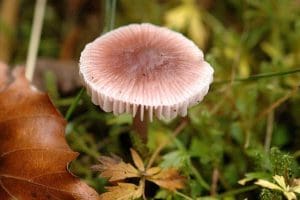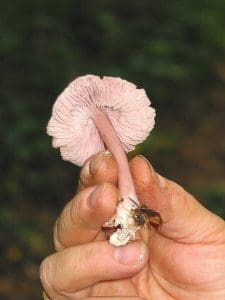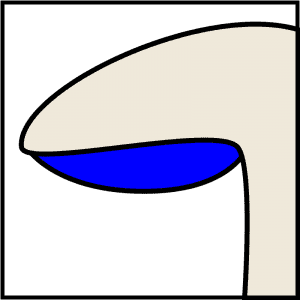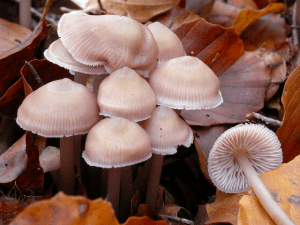Lilac Bonnet / Summer / Autumn / Toxic
Step into the realm of caution as we unveil the mysterious Lilac Bonnet (Mycena pura), a mushroom that demands respect for its toxic nature.
Join us on a journey of awareness and safety as we delve into the risks associated with this intriguing fungus. With its delicate lilac-colored cap and petite stature, the Lilac Bonnet may seem innocuous, but it hides a potentially harmful secret. Learn to identify its unique features, explore its preferred habitats, and understand the potential dangers it poses.
While beautiful to behold, consuming the Lilac Bonnet can lead to severe gastrointestinal distress and other adverse health effects. Let this serve as a reminder of the importance of accurate identification, responsible foraging practices, and prioritizing personal safety. Respect the hidden dangers that nature presents, and navigate the world of mushrooms with informed caution. Stay vigilant, for the Lilac Bonnet stands as a reminder of the enigmatic perils that can lurk within the natural world.
Scientific Name
Mycena pura
Common Names
Lilac Bonnet, Lilac Bell cap
Family
Mycenaceae
Habitat
They are saprotrophic, living off dead matter, they can be found deciduous and coniferous woods, very rarely they appear in grasslands.
Description
A fairly common mushroom, they contain a small amount of muscarine so should be avoided.
Identifying Features:
Cap:
Bell-shaped and then flattening out with a central raised umbo. They can be quite changeable. They are typically lilac in colour with a paler almost white edge. Up to 6cm across. They tend to turn up at their edges as they grow showing the pale gills.

Stem:
Thin, fibrous and quite often twisted. They are smooth and grey. Up to 8 cm long.

Gills:
The gills are white to grey, with a slight pink tinge. Adnate to slightly decurrent.

Smell:
A raddishy smell when they are damaged.
Spores:
White.
Known hazards
They contain the toxin muscarine although in small quantities, they should be avoided.
Potential lookalikes
They could be confused with other bonnet species for example the Common Bonnet (Mycena galericulata) but these have paler caps and have much more complex gills.
The Rosy Bonnet (Mycena rosea) also looks similar in fact some believe they are the same species. Rosea tends to be larger and is also toxic.
Extra Notes
This mushroom has bioluminescent properties and they emit a faint green light at night.
The name Mycena comes from the hats worn by the ancient Greek Mycenae people.
Pura comes from the Latin purun meaning pure or clean.
Resources
https://www.first-nature.com/fungi/mycena-pura.php
https://www.naturespot.org.uk/species/lilac-bonnet
https://www.woodlands.co.uk/blog/flora-and-fauna/novembers-fungi-focus-rosy-bonnet-mycena-rosea/








Leave a Reply
You must be logged in to post a comment.